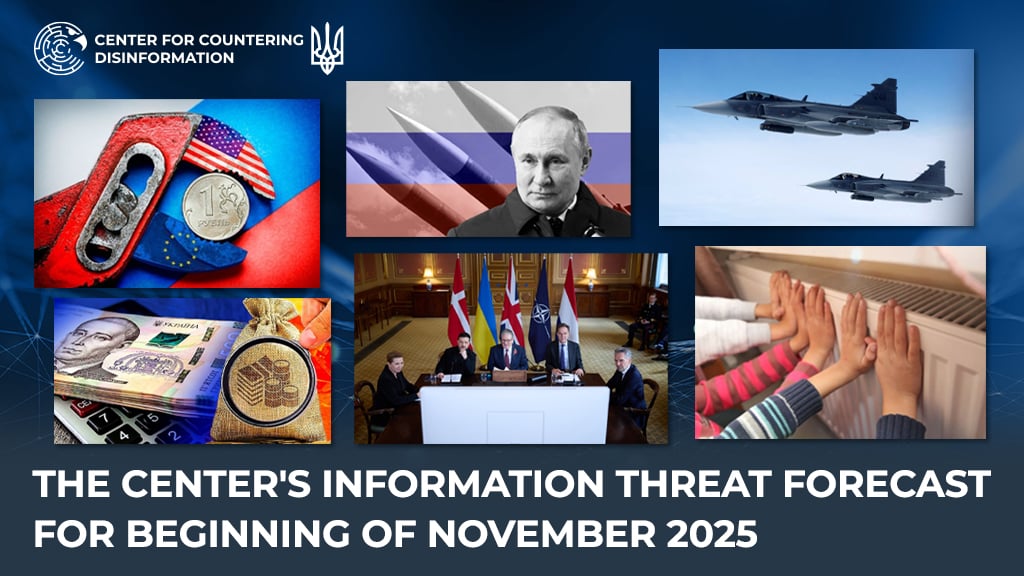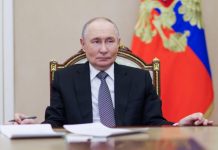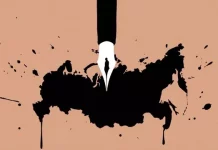By Center for Countering Disinformation
1. Intensification of Information Campaigns Regarding EU and US Sanctions
In response to the adoption of new sanctions by the United States and the European Union, a large-scale information campaign by russian propaganda is expected, aimed at discrediting restrictive measures and creating the impression of their alleged ineffectiveness. kremlin spokespeople and pro-government media will circulate claims that the sanctions “in no way affect” russia’s economy and only “harm Europeans and Americans themselves.”
The primary emphasis will be on several key theses: that sanctions supposedly “undermine the stability of the global economy,” “cause an energy crisis in Europe,” and “are an act of economic war by the West against russia.” russian information outlets are expected to promote narratives about the “counterproductivity” of the restrictions and the “failure of pressure policies,” in particular claiming that russia has “adapted” to sanctions and “strengthened economic sovereignty.”
Propaganda will likely exploit the message of a “sanctions hysteria by the West,” presenting it as proof of US and EU weakness and an attempt to “sabotage peace talks.” Simultaneously, the narrative that the sanctions are “revenge” for moscow’s refusal to yield on “national interests” will be advanced. The information campaign will also include personal attacks on US and EU leadership, accusing them of “violating agreements,” “disrupting diplomacy,” and “attempts to interfere in russia’s internal affairs.”
Sanctions targeting rosneft and lukoil will be portrayed by russian propaganda as a “blow to the global oil market” and a “threat to the West’s energy security,” while also assuring that russia supposedly has sufficient resources to redirect exports to “friendly countries.”
Overall, moscow’s information response will be twofold: rhetoric aimed at external audiences will stress the “illegitimacy and ineffectiveness” of sanctions, while domestic messaging will emphasize “russia’s resilience,” an “economic breakthrough,” and “another victory over Western attempts to break the country.”
2. Campaign to Intimidate the West with russia’s Nuclear Weapons
After the collapse of summit preparations in Budapest, the kremlin moved to an overt campaign of escalation messages promoting the idea of russia’s alleged “unprecedented” military advantage. This information campaign began with nuclear drills in russia and will continue over the coming weeks. russian propaganda is deploying maximum resources to cover the recent test launch of the intercontinental missile “Burevestnik” and the nuclear exercises.
The propaganda promotes the “uniqueness” and “uncontested” nature of this weapon, intended to create the image of an insurmountable threat to Western citizens.
In this way, russia seeks to impose on Western societies the idea that any escalation risks turning into a global catastrophe if the West continues weapons deliveries to Ukraine. The primary target audience of this campaign is citizens of Western countries. Messages about the “invulnerability of new russian weapons” are meant to instill fear. the kremlin aims for people to demand that their governments reduce military support for Ukraine, ease sanctions pressure, or agree to political concessions to the kremlin.
3. Campaign Around the Collapse of Negotiations Between russia and the US
The russian information machine is expected to continue a large-scale campaign to discredit the US and European partners following the collapse of preparations for the meeting between Donald Trump and putin in Budapest. The central thesis is that the West supposedly deliberately sabotages peace initiatives because it is “not interested in ending the war.” This narrative aims to absolve russia of responsibility for the failure of diplomatic efforts and shift blame to Washington and Brussels.
russian propaganda will attempt to portray the positions of European leaders as the main obstacle to peace. In this way moscow seeks to impose the view that only russian terms constitute a “peace plan,” while any Western initiatives are an attempt to “prolong the war.” At the same time, russian propaganda avoids mentioning the primary reason for the summit’s collapse — the kremlin’s unacceptable demands that conflict with the US position.
The goal of this information operation is to discredit the American initiative, fracture transatlantic unity, justify the continuation of the war and terrorist strikes against Ukraine under the guise of a “forced reaction.”
Part of this campaign was the visit of kirill dmitriev, head of the russian direct investment fund, to the US, which propaganda will attempt to present as a supposed continuation of “constructive dialogue” between moscow and Washington. russian media portray this visit as a “peace mission” and a “diplomatic breakthrough” intended to demonstrate the kremlin’s readiness to negotiate, although in reality dmitriev held no significant meetings and his trip effectively ended in failure.
russian propaganda nonetheless seeks to use the visit to create the illusion that the US supposedly “acknowledges” the need for direct dialogue with moscow. In this way the kremlin intends to hide diplomatic isolation, shift responsibility for the collapse of talks off itself, and advance the narrative that only russia stands “for peace,” while the West “sabotages agreements.”
4. Discrediting the Meeting and Work of the Coalition of the Willing
The Center forecasts a continuation of the information campaign by russian propaganda outlets aimed at discrediting both the concept and outcomes of the Coalition of the Willing meeting held on 24 October. The main narrative is to portray the gathering as a “military club” of Western states allegedly coordinating escalation, weapons deliveries, and preparations for offensive operations against russia.
This narrative aims to create an image of an “aggressive conspiracy” in domestic and international information spaces, and to accuse Western and Ukrainian leaders of consciously seeking to “continue the war at any cost.”
At the same time, propagandists will promote the thesis of the “theft” of frozen russian assets. The purpose of these messages is to sow doubt about the legitimacy of sanctions and restrictions against russia. This information operation aims to weaken international support for Ukraine, undermine trust in Western allies, generate political pressure on partner governments, and create an additional source of tension within Ukraine that the kremlin can exploit for political and military maneuvers.
5. Manipulations Around the Draft State Budget of Ukraine for 2026
The Center predicts that consideration of the draft State Budget of Ukraine for 2026 by the Verkhovna Rada will become another target for russian information operations aimed at destabilizing the domestic situation. The main focus of kremlin media will be spreading narratives about the threat of “financial collapse” to undermine trust in state institutions and to instill public fears that the state will be unable to provide pension payments, salaries, and social assistance.
Another direction of the disinformation campaign is comparing Ukrainian macroeconomic indicators with russian ones. Propagandists present selective figures without accounting for differences in economic structure, military expenditures, and the scale of external assistance. Such comparisons are used to create the impression that “russia stands firmer” than Ukraine and can continue the war for a long time. Hostile propaganda will attempt to convince Ukrainians that “the state is exhausted” and “Western aid does not save.” In this way the enemy seeks to provoke social tension and create pressure on the Ukrainian government.
6. Disinformation Campaign Concerning the Heating Season and Ukraine’s Winter Preparedness
The Center forecasts an intensification in the first half of November of russian information campaigns around the heating season and Ukraine’s winter preparedness. Propaganda will amplify narratives about alleged catastrophic consequences of numerous strikes on energy infrastructure, which supposedly will lead to widespread heating outages, an “energy collapse,” “cities freezing,” and mass population outflow. russian media will emphasize the “incompetence” of Ukrainian authorities, spreading messages about “inaction” and alleged inability to protect citizens from the crisis effects of the cold season.
At the same time the enemy will create the illusion that heating problems are a systemic failure of the Ukrainian state rather than consequences of attacks on energy facilities. The aim of the campaign is to demoralize the population, undermine trust in the government and state institutions, and to create pressure on authorities and international partners demanding a humanitarian resolution of the conflict on terms “favorable to russia.”
7. Information Campaign Around the Sale of Gripen Aircraft
The Center predicts an intensification of russian information campaigns regarding the agreement to purchase over one hundred Swedish Gripen fighters for the needs of the Armed Forces of Ukraine. Widespread dissemination of manipulative narratives is expected in both international and Ukrainian information spaces.
The main focus of russian media and proxy resources will be promoting messages about an alleged threat of uncontrolled escalation on the European continent after the transfer of the aircraft, as well as “direct risks for NATO countries.” The spread of fakes about supposed dissatisfaction among European taxpayers with the Swedish government’s decision, which “forces ordinary EU citizens to finance the Ukrainian war,” will be intensified.
A separate emphasis will be placed on discrediting Western military-technical assistance — the enemy will push messages that Ukraine is being sold old or ineffective equipment, that Ukraine is being used as a testing ground for weapons, and that the Western defense industry profits from wartime deliveries. The kremlin’s bot network is expected to intensify information attacks aimed at undermining trust in Ukrainian government and military institutions’ decisions on aviation security and modernization, stimulating domestic debate over the advisability of such purchases and stoking public concern.
The narrative alleging internal contradictions among partner countries that produce arms, potential “splits” within alliances, and the risk of losing international support will also be spread. Such actions are part of a russian disinformation campaign aimed at weakening political unity on aviation assistance to Ukraine, demoralizing Ukrainian society, and influencing international partners’ decisions regarding the transfer of Gripen aircraft.
8. Intensification of the Campaign About “Atrocities by the AFU” in Frontline Areas
The Center predicts an escalation of russian information campaigns aimed at discrediting the Armed Forces of Ukraine by spreading fakes and manipulative stories about alleged “atrocities” by Ukrainian servicemembers in frontline areas. Propaganda outlets and proxy channels will prepare large-scale information injections about “terrorism by the AFU,” “torture of civilians,” “shootings of citizens,” and “blocking detachments,” which will be actively replicated on social networks, messengers, and through controlled media.
The primary goal of the campaign is to undermine local populations’ trust in the Ukrainian army and authorities, provoke division and fear in frontline communities, and use this information in international media with the intent of weakening support for Ukraine worldwide. kremlin propaganda seeks to construct an image of the AFU as a “criminal force” capable of war crimes, thereby justifying russian aggression and demoralizing defenders and civilians.
By Center for Countering Disinformation





